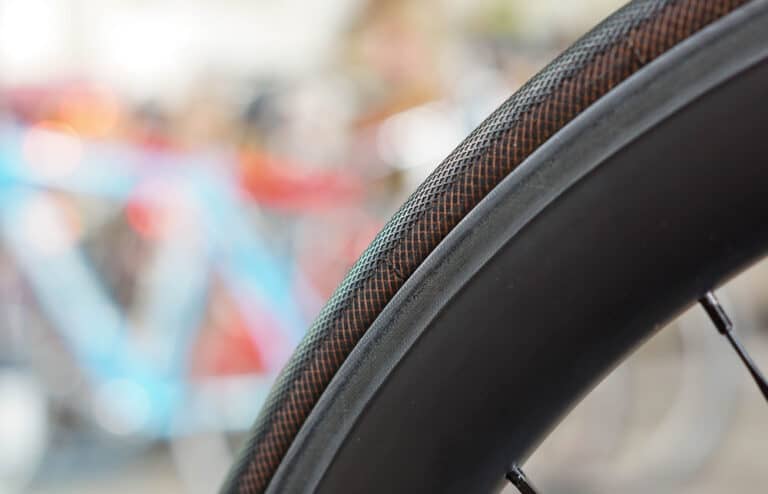Do BMX Bikes Have Gears?

The BMX bikes’ gear is made up of cogs, cassettes, and sprockets that are linked together by a chain. The gearing on a BMX bike is typically different from that of a mountain bike or a road bike. Since BMX bikes typically only have one gear, the setup must consider the rider’s demands. But this still leaves the question, “Do BMX bikes have gears?”
BMX bikes have gears; however, it is a single gear. Some would argue that the configuration equates to two gears, though. BMX bikes originally had a higher gearing ratio of 44/16. However, the most recent BMX bike models feature reduced gearing with ratios ranging from 22/8, 23/8, 25/9, and 36/13.
So we understand that the gear system of a BMX bike is relatively straightforward at first; however, there are various BMX bike models available, and each one has quite a few variations in the gear ratios and gear designs. We’ll cover all you ought to know about BMXs and their gears in this post and discuss gear ratios and how to calculate BMX gearing ratios.
Will You Find Gears On A BMX Bike?
Although road and mountain bikes are the most widely used types of bicycles worldwide, BMX is not far behind. These bikes have straightforward designs and functions that can manage specific weights and navigate challenging terrains that road bikes and mountain bikes fear to tread.
Children that enjoy being outside and riding bicycles are known for their love of BMX bikes. BMX is an acronym for bicycle motocross. These off-road racing bikes are portable, light, and excellent for fun riding, stunts, and other activities like dirt jumping.
Can BMX bikes have gears despite their excellent designs? A BMX bike’s gearing arrangement differs from a road cycle or mountain bike.
If we were to state that BMX bikes have gears, it would be summed up by stating that they have one. The gear ratio is the term used to describe the best way of describing what they possess. Calculating this requires a basic understanding of maths. How many teeth on the chainring as well as the sprocket should be considered when it comes to BMX gearing since BMX bikes typically lack gears.
A gear is a revolving wheel or disc with cut teeth that transmit force by meshing with another toothed item. Most BMX bikes only have one gear. A BMX bike with multiple gears is uncommon. The single-speed gear (one gear) is a significant factor in preserving the bike’s minimal weight.
In addition to cassettes and sprockets next to the pedals, BMX bikes also include a set of cogs in the rear wheel. These two function as gears when joined by a chain, and the entire operation aids in rotating the wheels. So, sure, some would argue that a BMX bike does indeed have two gears.
Diverse types of riders favor various types of gearing. Bicycles can have either tall gearing or short gearing. The ratio between how many teeth are on the sprocket and the cog in the rear wheel is greater in tall gearing than in short gearing, which is the opposite. It is more difficult for the rider to pedal in tall gearing to produce more speed momentum than in short gearing.
While racers typically opt for taller gearing, flatland riders will typically favor shorter gearing. The height of the gear ratio increases with the number of teeth in the sprocket, while the opposite is true for short gear ratios.
Looking At The Gear Ratio On BMX Bikes
Even though BMX bikes don’t have several gears, it’s still vital to consider the ratio and number of teeth on the chain ring and sprocket. The harder it is to pedal, the greater this ratio is, and the simpler it is to pedal, the lower this number.
Although the terms “sprocket” and “chainring” are sometimes used interchangeably, we shall use the term “sprocket” to refer to the rear driver attached to the hub in this context. The number of teeth found on the chainring and sprocket, often known as the “gear ratio,” should be considered even though BMX bikes don’t have multiple gears.
Elementary math is used to figure out the gear ratio. The easier one finds it to pedal, the lower the number, and the more challenging it is to pedal, the higher the number. Divide the number of teeth on the chainring—let’s say 25, by the number of teeth on the sprocket—and you’ll get 2.78, which means that for each revolution of the chainring, the rear wheel will turn about two and a third times.
Over the years, the 44/16 gearing, 55 gear inches, has become the most typical and well-liked BMX gearing. Most riders, from flatland and park riders to racers and stunt riders, may use gear ratios close to 55 inches.

Considering What Is The Best Gear Ratio For A BMX Bike
First and foremost, you must determine your bike’s gear ratio. It would be best if you employed the technique mentioned above in the article to accomplish this. You will discover your bike’s gear ratio as a consequence. What is the ideal gear ratio, though? Alternatively, what gear ratio will best meet your needs?
The size of the wheels and, more significantly, your level of comfort will determine the answers to these questions. You will need more teeth if your BMX bike has noticeably large wheels and vice versa. So, always choose the BMX bike gear ratio best suits your requirements.
Here are the recommended gear ratios for BMX bikes and why they are the best, as determined by review data.
1. BMX bike gear ratio of 25/9.
This is arguably the most widely used gear ratio for BMX bikes. It has a gear ratio of roughly 2.78/1. You should be aware that the lower the ratio, the better your BMX bike should be for you. Smaller gears typically facilitate simple pedaling, allowing the bike to move forward with less effort.
2. BMX Bike Gear Ratio of 44/16
This gear ratio has 55 gear inches and is generally thought to be the best. It is one of the earliest BMX models with relatively large wheels, is still on the market, and is used by many BMX bikers worldwide.
3. BMX Bike Gear Ratio of 30/11
Another exceptional BMX bike ratio is this one. The ratio is relatively simple, which makes pedaling easier. It has a ratio of roughly 2.73/1, making it an excellent ratio to consider.
Since there are numerous BMX bike gear ratios on the market, picking the one that best suits your demands is strongly advised. The most suggested gear ratio is 2.8/1 or less.
Working Out BMX Gearing Ratio
To get your gear ratio, count the sprocket’s teeth and divide by the number on the rear cog. Divide the result you get by the diameter of the wheel. The rear cog teeth of vintage BMX bikes numbered 16, and the front sprocket teeth numbered 44.
Therefore, the gear ratio for a 20-inch wheel is 44 ÷ 16 x 20, which equals 55. The rollout or the distance traveled after one pedal revolution, is calculated by multiplying the gear inch ratio by pi (3.14). Thus, one pedal revolution moves the 20-inch bike 172.7 inches (3.14 x 55).
Conclusion
So ultimately, BMX bikes have a gear system consisting of one gear. To determine the times your rear wheel turns per revolution of the chainring, divide the number of teeth on your chainring by those on your sprocket. The easier it is to pedal, the lower the number; conversely, the harder you have to pedal, the higher the number. This means you will need to apply more force.
References
- https://www.bikeexchange.com.au/blog/bmx-bike-ultimate-buyers-guide
- https://bicycle2work.com/bmx-bikes-gears/
- https://bmxbikingtips.com/can-bmx-bikes-have-gears-everything-explained/
- https://bikesreviewed.com/bmx/bmx-bikes-ultimate-guide/
- https://outdooralive.com/do-bmx-bikes-have-gears/
- https://bikesinsight.com/do-bmx-bikes-have-gears/
- https://mybikemyworld.com/do-bmx-bikes-have-gears/







